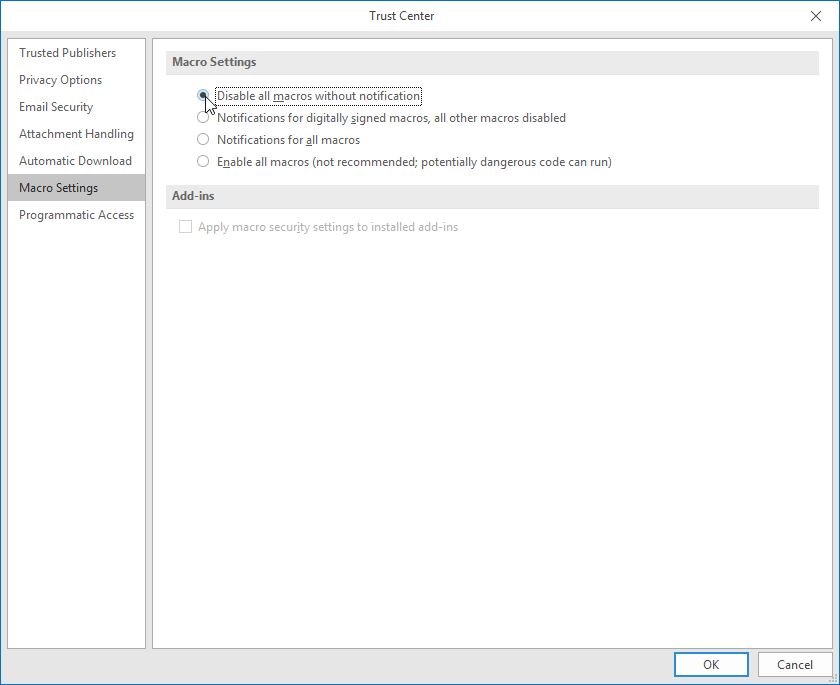Here is how to protect your business from ransomware:
- Educate users
- Browse the internet securely
- Stop phishing emails before they reach your mailbox
- Deactivate the execution of macros in email programs
- Keep your infrastructure and applications up to date
- Harden security on your network
- Make regular backups
- Install antivirus and anti-malware
While some viruses or malware will silently harm your computer, ransomware uses the power of fear to stress you and extort important amounts of money from your business. Ransomware is one of the biggest risks facing any organization, be it small, medium or large. The harm can be particularly fatal for SMBs struggling to stay afloat in a very competitive environment. Here are 8 critical actions to protect your business from ransomware.
1. Educate Users
An IBM 2017 study reveals that only 31% of users are aware of ransomware.
This means two thirds of people don’t know about the dangers of ransomware. You need to raise awareness around cyber threats to educate everyone on how to behave when using any computer technology. Use all possible means.
2. Browse the Internet Securely
Ever noticed that your CPU goes abnormally high and your computer slows down while you’re browsing the Internet? This could be the symptom of an ongoing illegitimate activity on your computer.
Most security endpoint tools now include a safe browsing app. Make sure you get it enabled. Also, disabling ads can help prevent malicious websites from luring you into them.
3. Stop Phishing Emails Before They Reach the Mailbox
Because many ransomware infections start with an email, you need to make sure your email system runs fine-tuned, anti-phishing policies.
Most serious providers like Microsoft (for Office 365) have anti-phishing features enabled on their email servers. But, as we’ve often seen, some emails have gone under the radar and reached the users’ mailboxes.
4. Deactivate the Execution of Macros in Email Programs
A lot of the ransomware attacks use a macro-enabled Office file to infect the computer. Even if there is a warning message that asks the user to confirm the macro execution, most of them will accept to do it just to get rid of the message. That’s why it’s important to disable macros whenever possible.
In Outlook 2016 for example, you can do so by modifying the Macro Settings in the Trust Center.

5. Keep Your Infrastructure and Applications Up to Date
Even if ransomware does not generally rely on operating system or application vulnerabilities, they do remind us of the importance of installing updates. Make sure you deploy updates as soon as they are available. If you’re working in a structured environment where updates need to be tested prior to deployment, it’s important that you have a proper lab environment that best matches the production infrastructure.
6. Harden Security on Your Network
The Samas ransomware targeted a specific industry in 2017, using penetration testing against networks and finally encrypting files and backups.
There are other cases where cyber criminals prepare multi-level attacks. First, they’ll display messages on a few endpoints and try to extort money. If it does happen, their next level is to storm the local network they already had access to by attacking servers and more.
It’s then important to make sure your routers and switches don’t allow unnecessary access and traffic that could be used by malicious people.
7. Make Regular Backups
You need to make sure that when ransomware hits, you don’t limit your options to simply paying the ransomware or saying goodbye to your data. With an efficient backup strategy in place, you’re guaranteed to get your data back and your computer up and running in a few hours or even minutes. Because network drives can also be encrypted during an attack, it takes an offsite backup tool to keep your data away from ransomware’s stealthy reach.
8. Install Antivirus and Anti-malware
With ransomware affecting mobile devices too, you can never be too cautious to protect your business from ransomware. Installing security tools on all computers and smart devices is essential, but not enough. You also need to keep the tools up to date. Use a reliable endpoint security solution with centralized management to ease your daily tasks.
